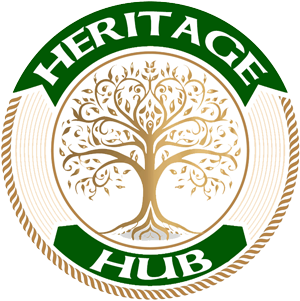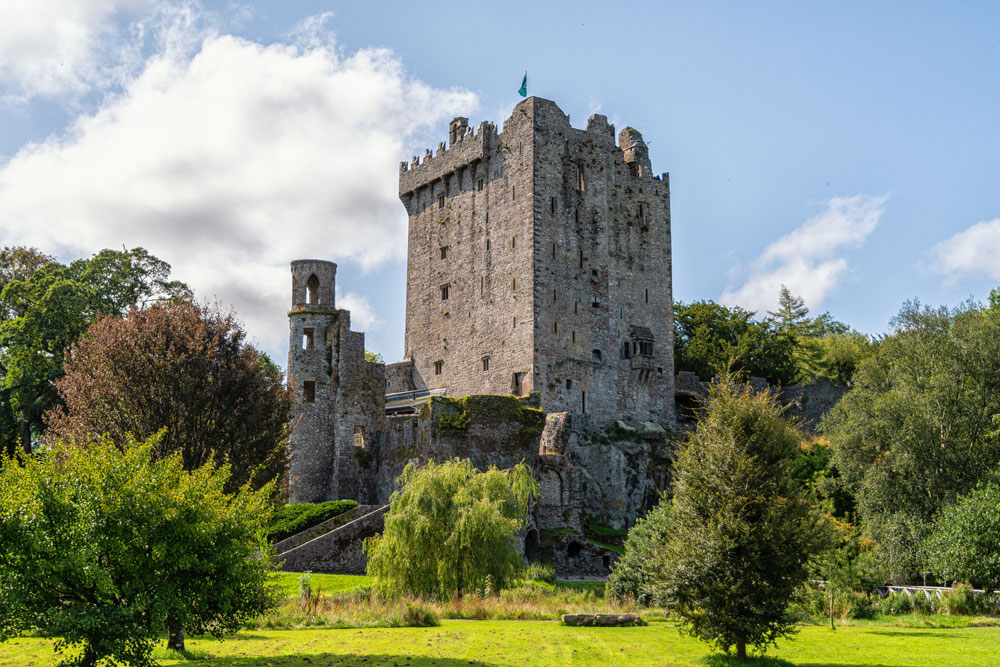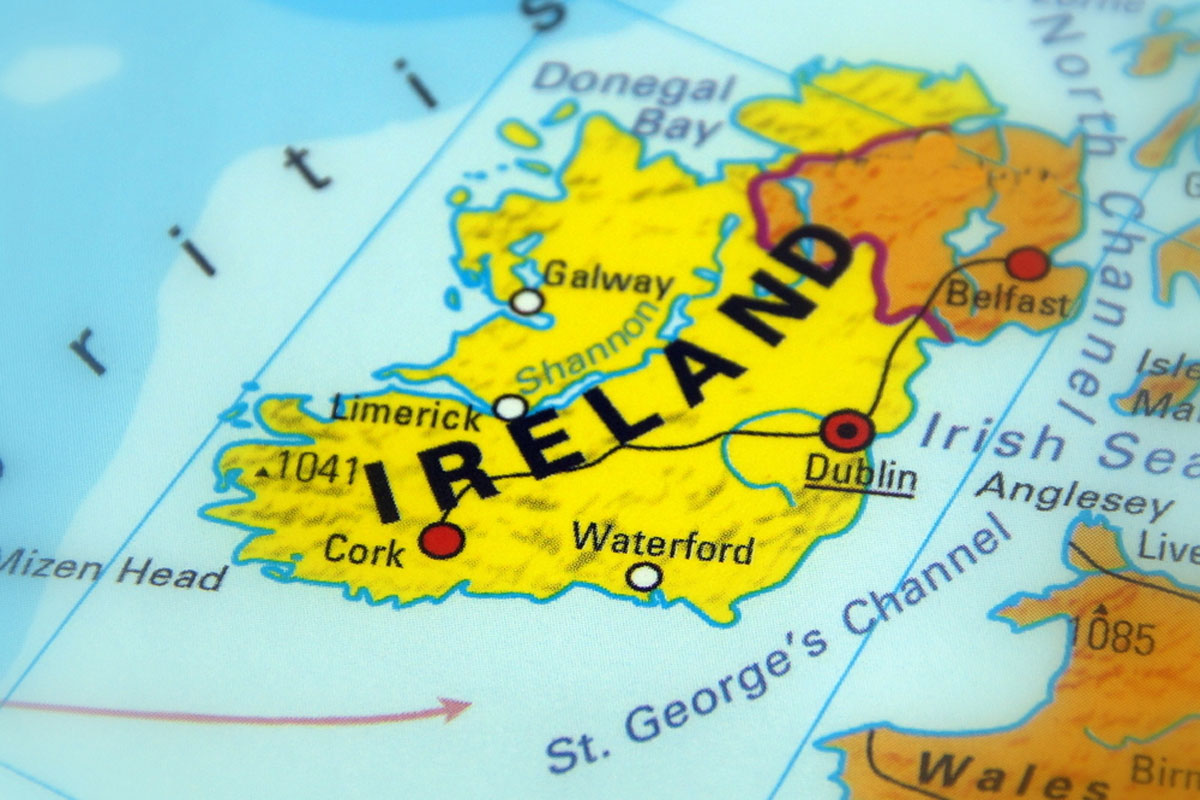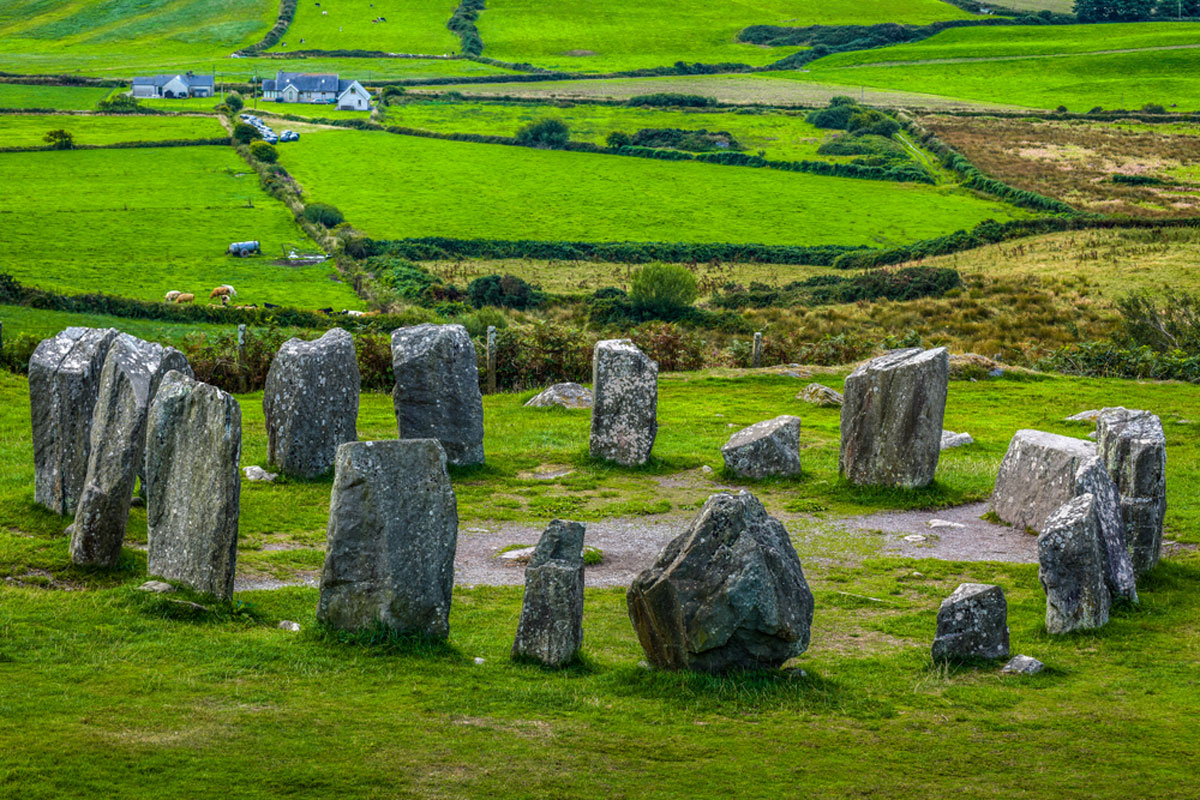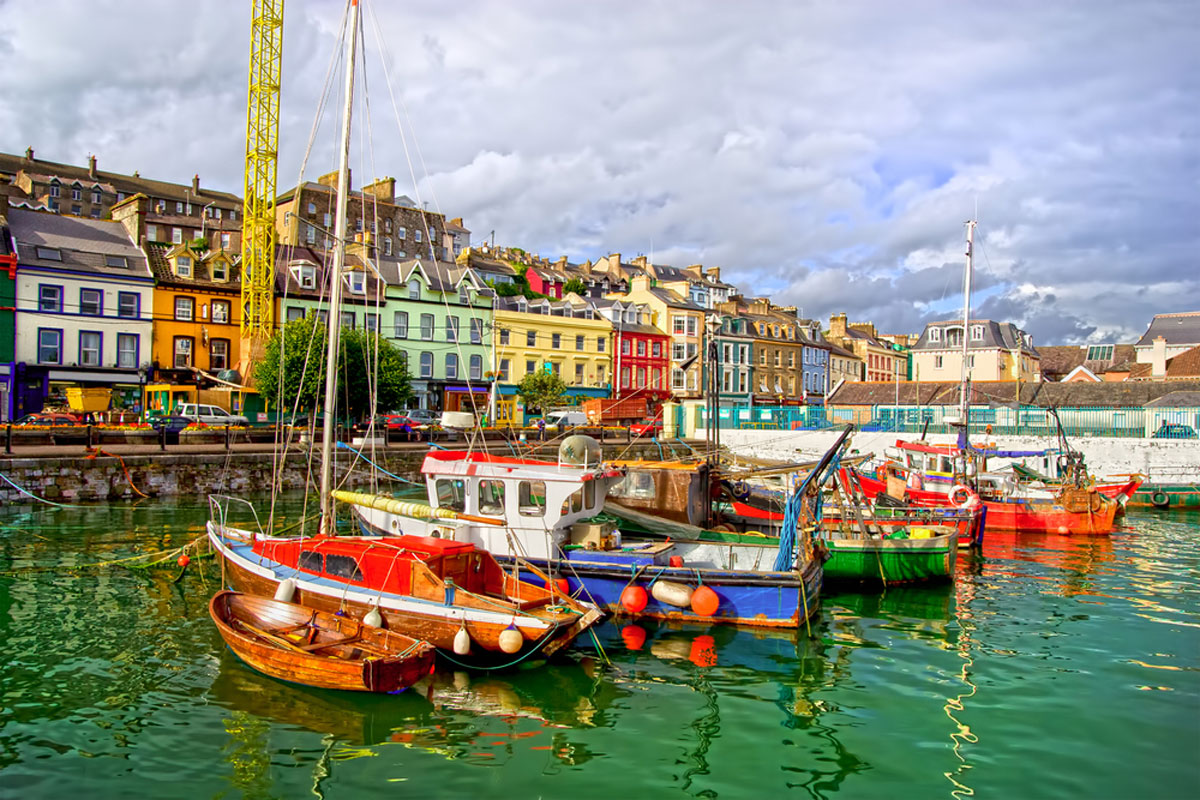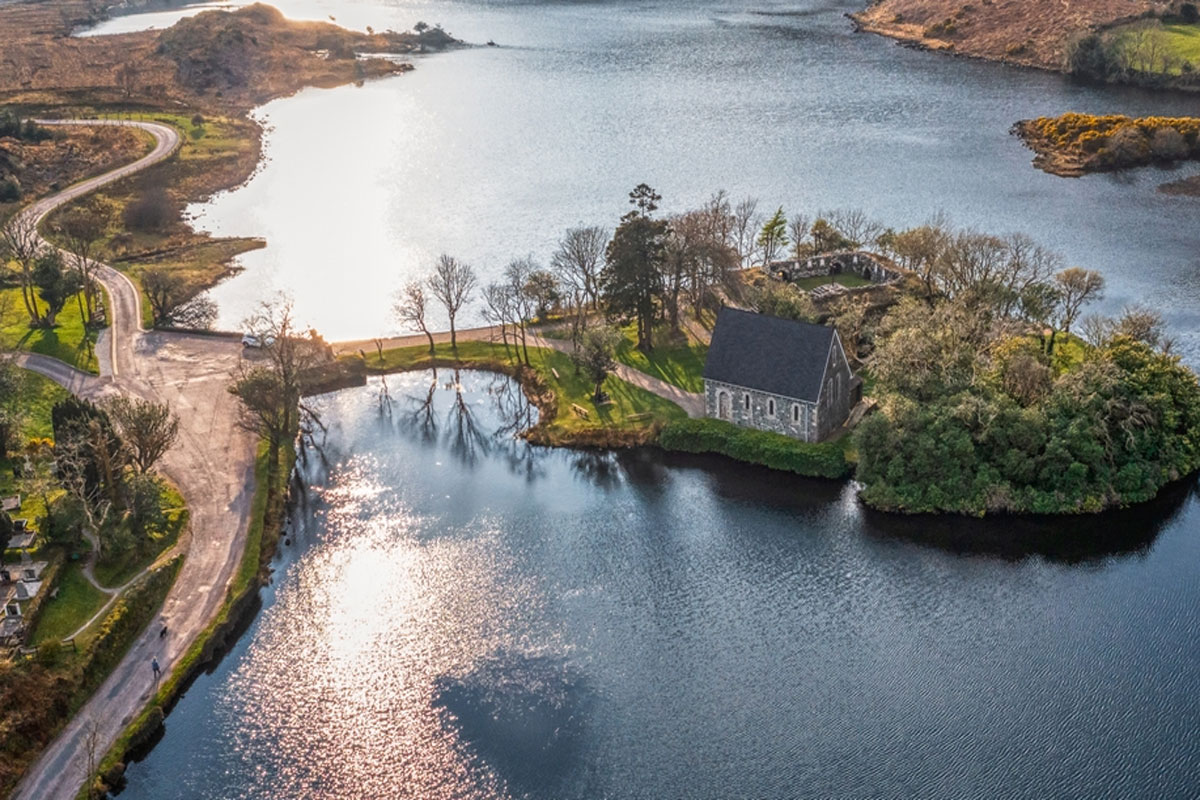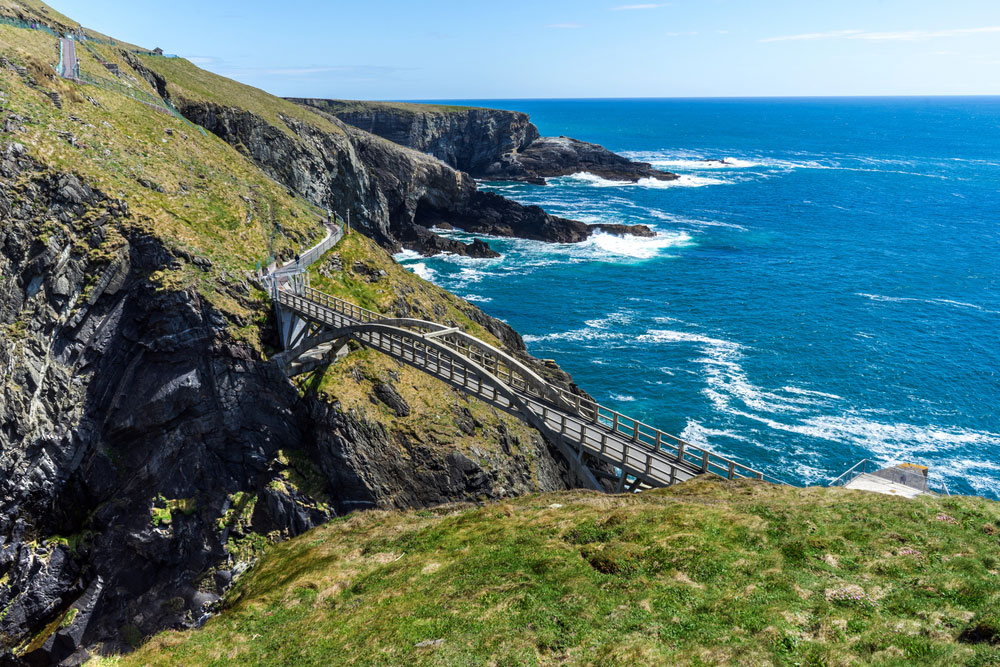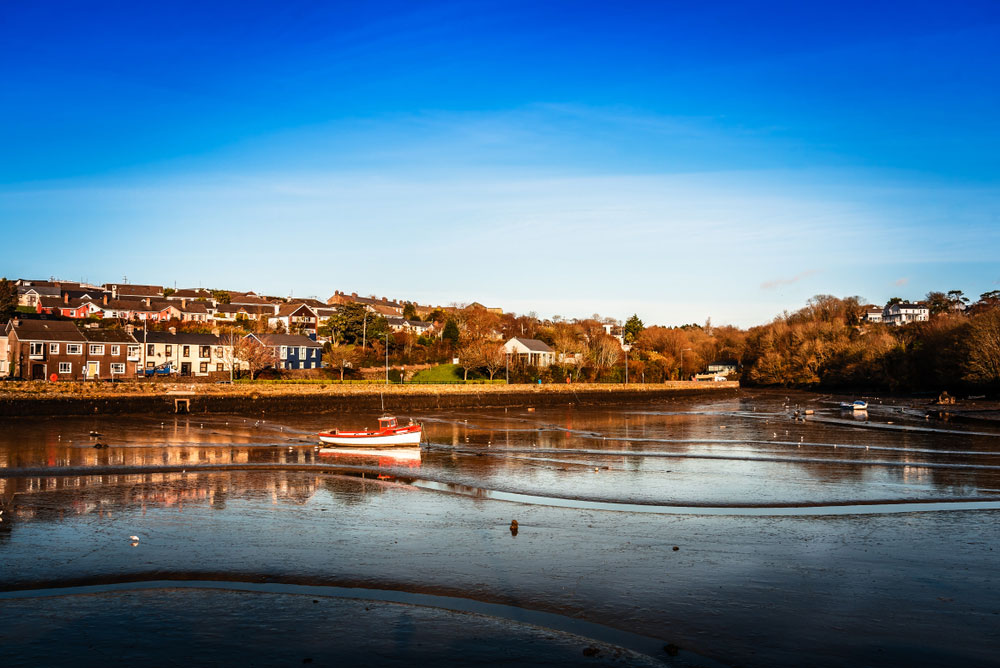The Blarney Stone is a two-foot-long, one-foot-wide slab of limestone placed at the top of the tower of Blarney Castle in County Cork, Ireland. The stone is fixed into the castle’s wall at a height of around 20 feet above ground.
The stone is shaped unusually, with one end tapering to a point and the other flat. Visitors to the castle kiss this flat end of the stone, lying on their backs and leaning backwards over the battlements to reach it.
The stone itself is thought to be around 330 million years old and is composed of a kind of limestone known as carboniferous limestone. The stone has aged and degraded over time, giving it a peculiar look with various pits and grooves.
Many people believe that the Blarney Stone holds magical abilities, and it has been the focus of much mythology and myth. Those who kiss the stone, according to mythology, will be gifted with the gift of eloquence and will be able to persuade even the most obstinate persons to understand their point of view.
Notwithstanding the countless myths and legends surrounding it, the Blarney Stone remains a famous tourist attraction, with tourists from all over the world flocking to Blarney Castle to kiss the stone and reap its alleged advantages. The stone is now considered a symbol of Irish culture and tradition, and it remains a fascinating and intriguing aspect of the country’s past.
The Blarney Stone’s History
One of the most prominent legends about the stone dates back to the 15th century, when the castle was being built. Cormac Laidir MacCarthy, the castle’s owner, made a plea to a witch he had spared from drowning, and in exchange, she cast a spell on the stone, bestowing the gift of eloquence on those who kissed it.
Another legend has it that Queen Elizabeth I insisted that the MacCarthy clan hand up the castle to her. When they met, Cormac MacCarthy, the then Lord of the Castle, avoided the queen’s anger by offering her meaningless flattery and deceit. He allegedly kissed the stone and acquired the gift of eloquence, allowing him to talk his way out of difficulty.
Another story tells of a young guy who was saved from falling down the battlements of a castle by a mysterious creature. The entity then told the guy that the stone has extraordinary abilities and that if he kissed it, he would never remain speechless again.
Notwithstanding these stories, the Blarney Stone’s real history is unknown. Some historians think it was delivered to the castle by Crusaders, while others believe it was once a pagan stone of devotion.
Despite the stone’s uncertain origins, one thing is certain: it has become an important element of Irish folklore and culture. Nowadays, people travel from all over the world to kiss the stone and acquire the gift of eloquence.
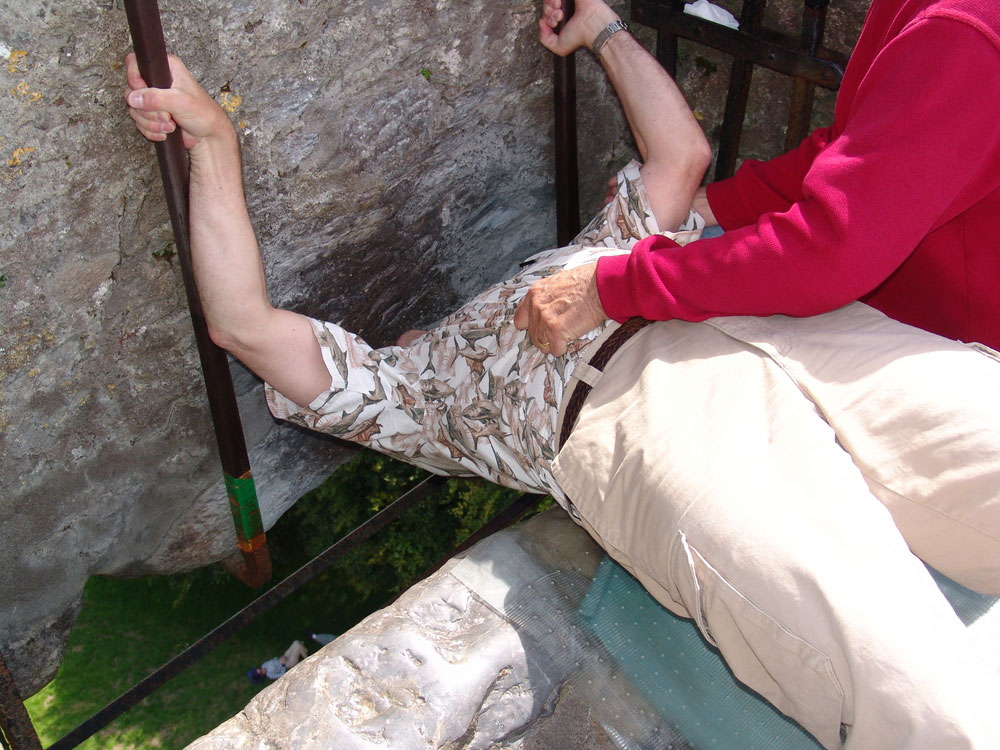
What is the significance of kissing the Blarney Stone?
People kiss the Blarney Stone because they believe it will provide them the gift of eloquence, or the ability to talk effectively. Those who kiss the stone are claimed to be able to talk themselves out of any difficulty, persuade others to understand their point of view, or just become better public speakers.
The origins of this idea are unknown, however it is estimated to be several hundred years old. A famous legend talks of a man who was saved from falling down the battlements of a castle by a supernatural creature. The entity then told the guy that the stone has extraordinary abilities and that if he kissed it, he would never remain speechless again.
Another tradition has the castle’s lord, Cormac Laidir MacCarthy, appealing to a witch he had spared from drowning. As exchange for his assistance, the witch put a spell on the stone, bestowing the gift of eloquence to those who kissed it.
Despite the absence of scientific proof to back up these assertions, kissing the Blarney Stone has been a popular tourist attraction for generations. To reach the stone, visitors to Blarney Castle ascend to the top of the tower and lie on their backs, leaning backwards over the battlements. While some may do it for the ostensible advantages, others do it simply to be a part of a centuries-old ritual and to soak in the spectacular views from the castle’s vantage point.
Visiting the Blarney Stone Gardens
The Blarney Stone Gardens, located on the grounds of Blarney Castle in County Cork, Ireland, are a beautiful work of natural beauty. These gardens have been meticulously constructed and cultivated to provide visitors with an amazing experience, with a breathtaking mix of flora and fauna to please the senses.
The Rock Close, a mysterious location cloaked in tradition and folklore, is one of the gardens’ principal delights. This breathtaking location features winding roads, towering trees, and flowing streams that create an enchanting environment that takes visitors to a realm of enchantment and imagination. Visitors may explore the magical Dolmen, an ancient burial place, and the Wishing Steps, which are claimed to grant wishes to those who ascend them while thinking of one.
Another feature of the gardens is the Poison Garden, which has a variety of plants that are poisonous if consumed. This one-of-a-kind attraction gives guests an intriguing look into the world of toxic plants, as well as its usage in medicine and mythology. Guests may wander around the Poison Garden at their leisure, learning about the hazards and qualities of numerous plants while being surrounded by their breathtaking beauty.
The grounds also provide a lot of peaceful spots for introspection and contemplation. For example, the Bog Garden is a tranquil area rich with wetland plants and flowers that thrive in moist circumstances. The grounds also include a lovely lake that is home to a plethora of ducks, giving visitors with a tranquil haven in which to rest and take in the sights and sounds of nature.
Ultimately, the Blarney Stone Gardens are a remarkable tribute to nature’s beauty and force. Visitors may spend hours wandering the gardens, uncovering hidden treasures around every corner and immersing themselves in the enchantment and wonder of this really magical location.
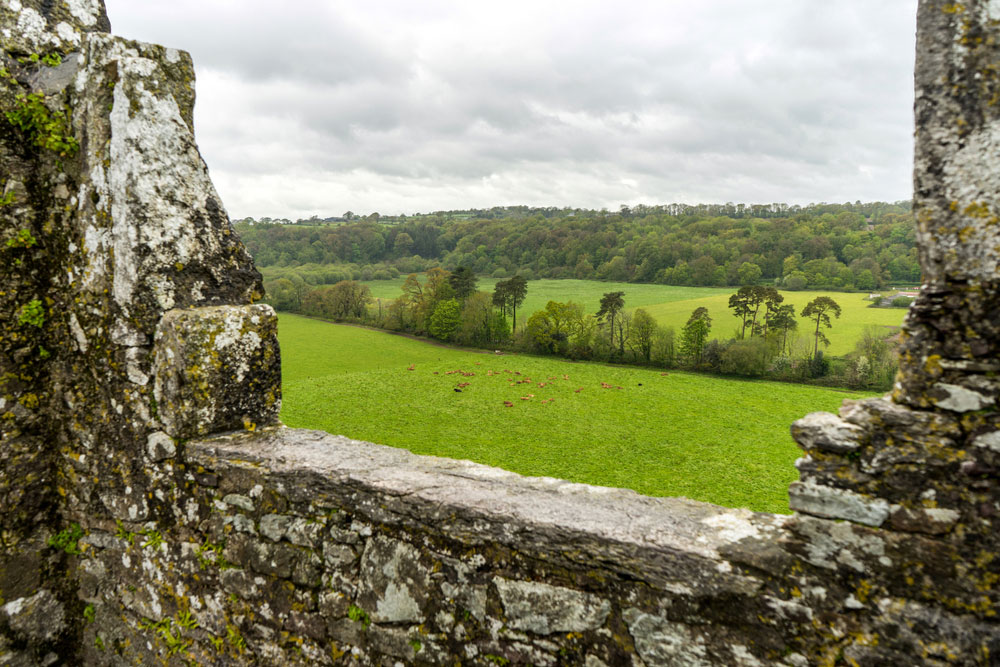
Natural Attractions
- Blarney Castle and Gardens – Famous for the Blarney Stone, said to grant the gift of eloquence to those who kiss it.
- Gougane Barra Forest Park – A tranquil park with forest trails, a serene lake, and a historic chapel.
- Mizen Head – Ireland’s most southwesterly point with dramatic cliffs and a signal station.
- Ballycotton Cliff Walk – A scenic coastal trail with stunning views of the Atlantic.
- Garinish Island – A beautiful island with subtropical gardens accessible by ferry from Glengarriff.
Historical and Cultural Sites
- Cobh Heritage Centre – Explore Ireland’s emigration history and the story of the Titanic’s last port of call.
- Jameson Distillery Midleton – Learn about the art of whiskey-making and enjoy a guided tasting.
- Charles Fort – A well-preserved 17th-century star-shaped fort overlooking Kinsale Harbour.
- Blackrock Castle Observatory – A historic castle housing an interactive science and astronomy center.
- Elizabeth Fort – A 17th-century fort offering panoramic views of Cork City.
Lakes and Water Activities
- Lough Hyne – A saltwater lake perfect for kayaking, snorkeling, and stargazing.
- Inchydoney Beach – A pristine beach ideal for swimming, surfing, and relaxing.
- The River Lee – A picturesque river that flows through Cork City, offering opportunities for boating and walking.
- Bantry Bay – Known for sailing, fishing, and exploring nearby islands.
Scenic Drives and Villages
- Kinsale – A charming coastal town known for its gourmet food, colorful streets, and maritime history.
- Baltimore – A picturesque village offering ferry access to the islands of Roaringwater Bay.
- Clonakilty – Renowned for its vibrant music scene, colorful buildings, and Michael Collins Centre.
- Beara Peninsula – A scenic drive with rugged landscapes, colorful villages, and the Healy Pass.
Unique Experiences
- Spike Island – Once a monastery, fortress, and prison, now a fascinating tourist attraction.
- Fota Wildlife Park – A family-friendly park with free-roaming animals and educational exhibits.
- The English Market – A historic covered market in Cork City offering local produce and artisan foods.
- Dursey Island – Accessible via Ireland’s only cable car, known for its walking trails and unspoiled beauty.
- Sheep’s Head Way – A peaceful walking trail with spectacular coastal views and quaint villages.
County Cork is a treasure trove of natural wonders, historical landmarks, and cultural experiences, making it a captivating destination for all visitors.
Helpful Resources


